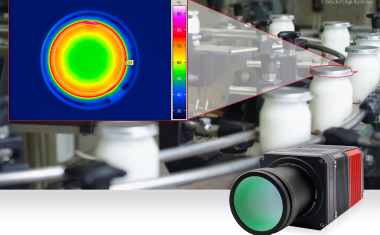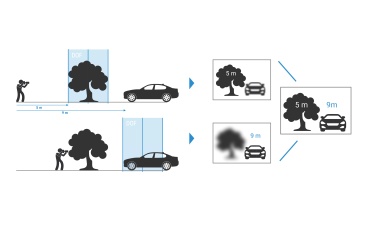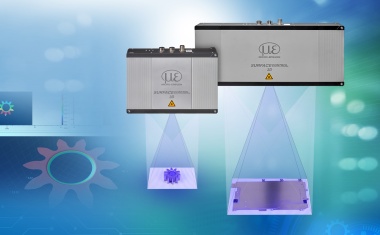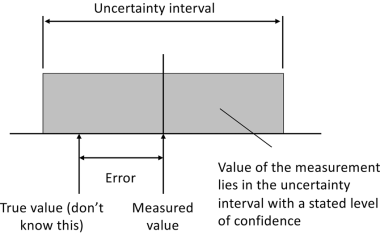Getting the Lighting Right Is Half the Battle
With the use of vision sensors, lighting is what it's all about for a stable and reliable process function. The more so with a demanding application like reading DataMatrix codes. With a code reader variation of their FA45 vision sensor, SensoPart Industriesensorik now realized an application that represented a particular challenge in that respect: error-free decoding of DataMatrix codes applied on reflecting plates of glass.
SensoPart received this enquiry from the engineering works of Gerold, a company located in the Lower Rhine area of Germany, manufacturing machinery for the production of solar modules. During production, coated glass plates are stacked and de-stacked and have to be identified by laser-written DataMatrix codes. For this, the end-user was looking for a reliable automated solution: "100 % recognition rate," was the customer's prerequisite. SensoPart proposed using a code reader variation of their FA45 vision sensor. In order to be able to guarantee reliable reading of the codes on the highly reflecting glass plates, the optimum arrangement of sensor and lighting was established in a field test (fig. 1)
Eliminating Reflections and Double-contours
To detect characteristics on a reflecting surface, the so-called dark-field lighting principle is chosen. Here the sensor is tilted by a certain angle off the perpendicular, so that the light emitted by the sensor and reflected by the object will not be returned directly into the sensor (fig. 2a/b). But in this case the solution of the problem was not that simple: "When detecting raised or grooved structures on transparent objects this arrangement will not yield satisfying results," says Markus Koslik, SensoPart Product Manager, "because interference between reflections from the mirrored front and back of the plates will cause double contours." Here, such a grooved structure was encountered in the shape of the laser-written codes. Using specimens supplied by the end-user, SensoPart therefore carried out trials with both sidewise-arranged area light and torus-shaped light (fig. 1, 2 c/d). To avoid double-contours the FA45 has to be positioned exactly at a right angle to the glass plate. It turned out that with the given measuring distance of 120 mm a lighting angle of 45˚ yielded the best results (fig. 3). For cost reasons the end-user decided on using the area-lighting variation (red light).
High Reading Reliability
The FA45 vision sensor houses in its very compact (45x45x64 mm) and highly insulated (IP65/67 Standard) continuous-casting aluminum housing all that is needed for professional imaging: CCD camera, optional white-light or red-light LEDs to light the object to be measured, standard M12 sensor socket connectors, PLC compatible I/O and data interface (RS 422, 100-Mbit Ethernet) as well as a high-powered DSP for data processing. In spite of this extensive equipment, the purchasing expenditure for the FA45 is well beneath that for a classical vision system.
The code reader variation of the FA45 is capable of reading DataMatrix code of the ECC200 type and several bar codes. Thanks to its efficient reading algorithm the vision sensor will also recognize without problems difficult-to-read codes - among those particularly directly marked codes (e.g. nailed or laser-written, with weak contrast, on mirrored surfaces or with irregular background), but also damaged or soiled codes. "The FA45's high reading reliability and its favorable purchasing price were the determining factor for the end-user," emphasizes Markus Koslik. Also, SensoPart's competence in application matters was persuasive: "With our lighting field test we were able to prove that the solution proposed by us is functioning at 100 %."











